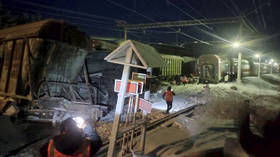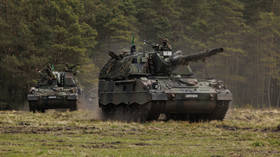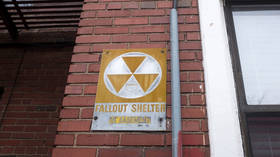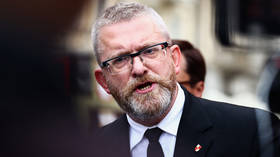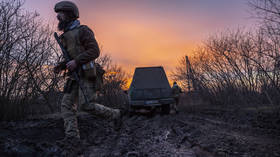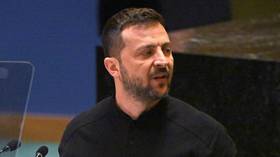'In a cage with a tiger': How locals in Taliban's Kabul adapt to the new reality
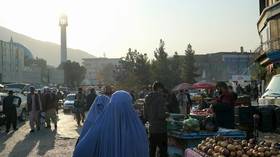
“Zendegi megozara” (Life goes on), an Afghan proverb says – and Kabul, dubbed by the Western media as the city of hope and despair, could be a physical illustration of the saying. Weeks of fear and uncertainty under Taliban rule followed the withdrawal of NATO troops, the mass evacuations and the flight of the country’s leaders. Despite a humanitarian crisis unfolding and the future seeming murky, however, the Afghan capital looks just as it did back in the republican days – on the surface, at least.
The airport in Kabul still isn’t working at full capacity. After the Taliban took over the city on August 15 last year, most international carriers ceased flights to Afghanistan until the situation stabilizes – except for low-cost airline Fly Dubai, Mahan Air of Iran, and few more regional companies.
Negotiations regarding the operation of Kabul Airport, which Turkey and Qatar are said to have commenced with the Taliban, are still believed to be underway as security demands remain unmet. As a shuttle takes passengers from the plane to the international terminal, a dozen of aircraft can be seen on the tarmac. They belong to either Kam Air or Ariana Airlines, the two Afghan companies currently conducting domestic and international flights.
Pictures have been removed from the airport’s outer walls of then-President Ashraf Ghani, Tajik mujahideen leader Ahmad Shah Masoud, and former president Hamid Karzai, after whom the airport was named. Instead, freshly painted graffiti states in English that the Islamic Emirate of Afghanistan wants peaceful and positive relations with the world. The sun-weathered airport compound does look peaceful, even with dozens of Taliban fighters dressed in fatigues, or, more casually, in traditional Afghan outfits, keeping their fingers on triggers. It is hard to believe that this very place witnessed a rapid, fall-of-Saigon-like evacuation and a number of human tragedies just over seven months ago.
According to a new rule, foreigners must register on arrival and fill out a form stating the purpose of their visit, the duration of their stay, and their marital status. As often occurs in Central Asia, a strict law is balanced by the reluctance of those who are to ensure its enforcement.
“You don’t know your complete address in Kabul, madam? It’s alright. You don’t have a picture? No problem,” says an immigration officer as he takes the form and starts pushing his way through the crowd of passengers arrived from Tashkent.
Despite rumors about the new regime prohibiting women from having jobs, the crew on my flight were female, and so were some of the airport employees. One of them, who has her hair covered with a black scarf and her face hidden under a mask, apologizes for her limited English and starts talking about the “good old days.” She mentions a women’s empowerment project she used to participate in, and her Western colleagues. I ask how she feels about the new government. She shrugs.
“How are the Talibs treating you?” I ask.
“It’s OK,” she replies in a local language. “But, you know, a Talib is a Talib. The word says it all. And I think there is no future now. Nothing to hope for, really. But God is great, let’s see.”
Security, new jobs, revenge
The windshield of the taxi is decorated by plastic flowers and a sticker reading “Allah.” A set of prayer beads hangs down from the rear-view mirror. The bearded driver wears a black turban and resembles a religious scholar, but in the parking lot he told me he had worked for airport security. After the Taliban took over Kabul, he spent some time in hiding, frightened that he would be detained for his “ties with the government.” However, a couple of weeks ago, the new airport security chief called him and asked him to come back to work. He was not given his former position, however, and drives a yellow taxi instead. This is a “state taxi,” he explains, with a license from the Ministry of Interior Affairs. This is much safer, especially for the foreigners, he adds.
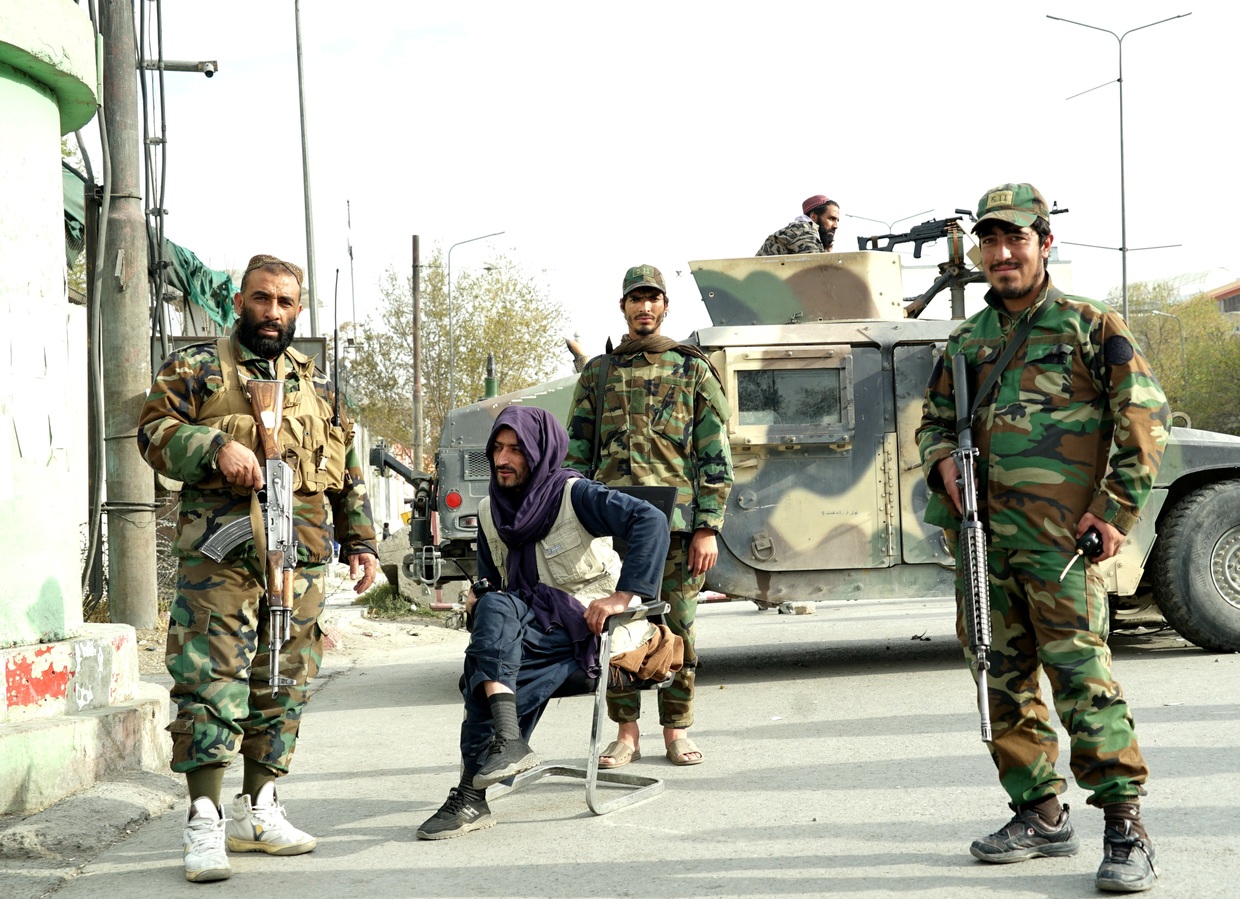
As we exit the airport, I ask him how the situation in Kabul has changed over the past three months.
“There is security, but no job,” he replies. “I was lucky to receive this car.”
Credit where credit’s due – the radicals try to provide security as they interpret it. There is a checkpoint at the exit, the next one about a kilometer away, and sometimes there are two or three of them on a single street. The security check itself is nothing much. Talibs assess passengers through the window as though they are trying to measure how dangerous they are just by looking at them. They occasionally open the trunk or ask for documents, even though some of the sentries are obviously illiterate. Those who listen to music in the car turn it off, and then resume listening as the Talibs let them go. If there is a female in the car, especially in the front seat, the checks are more thorough just for show.
Unlike during the times of the republic, when they had fixed locations and were primarily concentrated in the city center next to strategic sites like ministries and embassies, Taliban checkpoints are scattered around the city and rotate. You never know where you will find them the next day. Moreover, there are numerous patrols riding in former ANA (Afghan National Army) Humvees. Some of them still carry a republican flag painted on the door or chassis.
“They are using our cars now,” says Rahim (not his real name), a former soldier. He looks embittered as his eyes follow a passing Humvee. “They are using our weapons; they live our lives. And what happened to my life?”
Seven months ago, Rahim was part of ANA’s Commando Corps. After mid-August 2021, he disguised himself as a civilian and grew a beard to avoid the revenge of the Taliban. He said he killed many of them on combat missions in Helmand and Logar provinces. Unlike many of his former fellow soldiers, he refused to be evacuated and stayed in Kabul to support his family. Now he works a doorkeeper, making around $150 a month.
“I am sure they will kill me if they understand who I am,” he says.
I try to disagree. From what I know, if the Talibs find someone who served in the police or the military, the worst they do is beat them up or arrest them for a few days. But Rahim shakes his head. “It depends on what unit you were in. They knew we were hunting them, and several friends of mine from the same squad went missing already. They disappeared in Kabul, and nobody knows if they are still alive.”
“If we find a single bullet”
Aside from the network of checkpoints, the Afghan radicals have taken more serious steps to secure Kabul. Last month, there was a wave of extensive house-to-house searches in different areas of the city, mainly at nighttime. According to the Taliban authorities, the raids aimed “to detect criminal activity” and seize weapons.
“Four of them came to my apartment, three foot soldiers and an officer,” says Kawoos, currently an American NGO employee. They said, “If we find a single bullet, you will regret it,” and I asked, “What if you don’t find a single bullet?” I spoke Pashto and looked confident, so the officer commanded them to leave. All of them were polite enough, even taking off their shoes to enter the home and apologized for disturbing us as they came in.
As locals explained, the real goal was to find Northern Alliance sympathizers. Originally, there was supposed to be a door-to-door check in Khair Khana, a predominantly Tajik-populated enclave, but later the Taliban changed its mind to avoid triggering ethnic strife. Or was the real goal to stop those wanting to emigrate from leaving? Or was it targeting people like Rahim? There is an abundance of suggestions but a lack of facts. Moreover, there is a possibility that the searches will continue.
The outcomes of the search seem debatable – in a country like Afghanistan, I was told, one must have at least one gun in the house to protect his property from robbers. Now, with the weapons taken, many houses are defenseless. Weapons can become a necessity for Kabulians amid never-ending rumors of smoldering enmity within the ranks of the Taliban that might flare into open clashes at any time, with the Haqqani network and hardline militants from the east on one side and supporters of the new government’s Deputy Prime Minister Mullah Baradar on the other.
At the same time, Taliban fighters keep roaming around with their weapons, whether they go to the zoo or dine at a restaurant. Lift doors in local shopping malls are often decorated with a sign, “Entry is not allowed with guns” – or just a picture of a crossed-out Kalashnikov.
Apparently, the only area in the city that was not subjected to searches was Wazir Akbar Khan – the so-called green zone that contains a number of embassies, most of нуwhich are currently closed. Ironically, it still has a sort of diplomatic immunity, an unspoken law giving the area a strange kind of freedom. If there is a party in a house, the Taliban commander living next door turns a blind eye and a deaf ear if you decrease the volume of the music playing to the reasonable level.
The media say that the range of prohibitions that the Taliban has introduced is shrinking. On the ground, the restrictions don’t feel so tangible. This is more or less what Kabul is like today – there are intimidating humors, but nothing happens; there are numerous restrictions, but you never know which of them you can bypass. Barber shops are open, just like cafes, men wearing Western clothes and women wearing makeup and high heels are still seen in the streets. In addition, a portrait of Mullah Omar, a co-founder of the Taliban, looks at the capital from a wall of a guardhouse up on the hill – drawings are not a sin this time.
High above his head, a gigantic white Taliban flag flaps in the wind. The official flag-raising ceremony on 31 March emphasized, in a way, that the radicals do plan to hold the power they seized on 16 August – a bitter realization for many supporters of the Afghan republic both in the country and abroad.
In a cage with a tiger
In my experience, the most popular attitude the Afghans express towards the Taliban these days, just like a few months ago, could be summarized by saying, “They are not doing anything really wrong right now, but we don’t trust them.”
So it was, for instance, with Nowruz, which is also known as the Persian New Year and celebrated on the day of spring equinox. Taliban leaders decided to exercise tolerance to what they used to see as a “pagan holiday” back in the 1990s. This time, they decided to deprive Nowruz of the status of a national holiday, but allowed people to celebrate. Not many decided to do so, but goldfish and other traditional decorations for the New Year’s table were still sold in local markets.
“Kabul was quite different last year,” says Farid, a friend of mine. “Music everywhere, people dancing and hugging in the streets… Right, the Talibs did not prohibit the holiday. But guess why people decided to be quiet? It is like being in a cage with a tiger. He says he is not going to bite you, but you never know.”
Farid and his family invited me to the Paghman valley – a picturesque green place located an hour’s drive from Kabul. The Afghans come there to have a picnic by the river, do some hiking, and fly a kite. Some 30 years ago, this activity was labeled anti-Islamic and banned. Today, young fighters watch boys playing and ask to hold a kite coil for a while as a group of girls in bright traditional Afghan clothes are taking selfies on a mountain slope in the background. The scene looks almost pastoral – nothing like the Taliban era of the 1990s, as described by Khaled Hosseini in ‘The Kite Runner’.
“Some people think the Talibs are monsters,” says one of Farid’s teenage nieces, who is painting my hands with henna. “But I don’t think they are. They are normal, I think.”
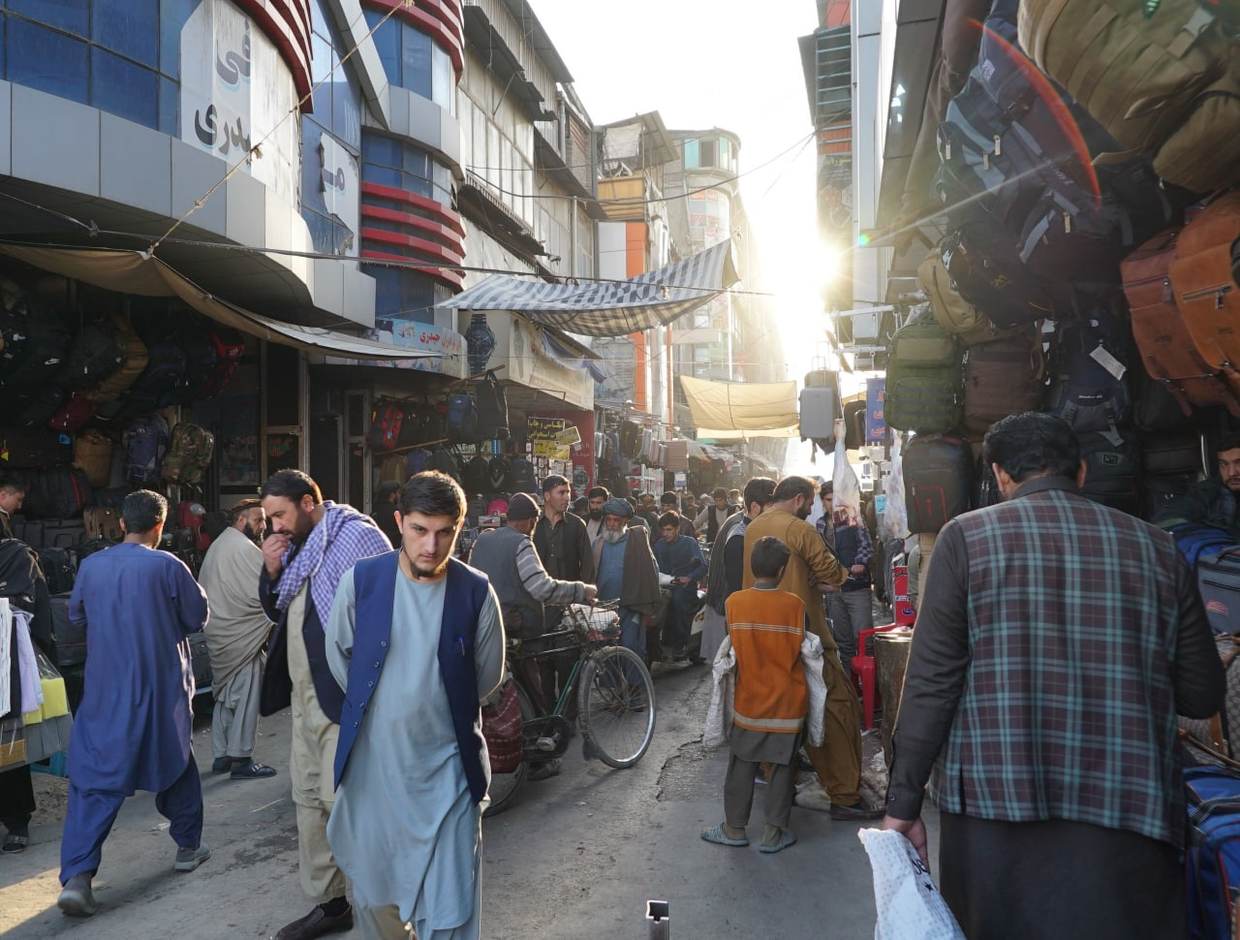
This episode came a couple of days before the Ministry of Education restricted girls above the sixth grade from study – after all the promises given before, and the Ministry for the Propagation of Virtue and the Prevention of Vice restricted unaccompanied women from boarding flights.
In late March 2022, in Kabul, late at night, with darkness outside, a police siren is wailing in the distance. I send a message to another friend of mine. “Hey, how has Kabul changed since I saw it last time in December? Maybe there is much more than meets my foreign eye?” I write.
“Pretty much everything is how you saw it,” reads the reply on the screen. “[The Taliban] are trying their best where they can.”
“Seems like all the negative changes are related to women’s rights. Then why [do] people mistrust them?”
“What they do has nothing to do with Islam. For example, does Islam say girls are not allowed to study? No. Then why? You know what they say? We fought jihad for 30 years, do not teach us Islam.”
The night lights still glowed from the hilltops of Kabul but how long until the lights go out and Afghanistan is a forgotten place of dreams and hopes?





